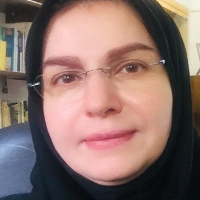Agglutinative-Analytic Morphology of Persian: A Distributed Morphology Approach
Author(s):
Article Type:
Research/Original Article (دارای رتبه معتبر)
Abstract:
The present research is aimed to analyses the morphological typology of Persian on the basis of the framework of Distributed Morphology (DM). According to the findings of DM, the predominant tendency of Persian's morphological type is defined here on a two-dimensional chart; a chart provided by Aikhenvald (2007) from the conjugation typology of languages, which itself was defined on the basis of the criteria proposed by Sapir. The horizontal axis in this diagram deals with the degree of internal complexity of words and its horizontal axis includes the transparency of morphological boundaries between the morphemes within a grammatical word. Accordingly, the main research questions are to determine: the position of Persian language on the basis of “degree of internal complexity of words”, as well as, its typology on the basis of “border transparency criteria”. To analyses the grammatical structures of Persian, a variety of diverse structures, among different Persian text types, including stories, textbooks, scenarios, and research papers was gathered, which contained a total number of nine thousand and six hundred words. The investigation on the first question on the basis of Greenberg’s quantitative standards illustrates that, by achieving a number of one thousand and five hundred and six words from the above-mentioned index, the orientation of today’s Persian language, according to the “degree of internal complexity of words” or what is called as “word combinability criteria”, is towards “analytic” language type. Considering the second question, the research demonstrates that in view of the “border transparency criteria” for morphemes which indicates ways to connect morphemes, Persian language is more inclined towards “agglutinating” language type. Finally, it can be concluded that based on the findings of DM, the dominant tendency of morphosyntactic structures of Persian is towards “agglutinating-analytic” languages. Therefore, the research findings in considering Persian within the DM framework approves its grouping within agglutinating-analytic language types, though in comparison to the previous studies, the reduction of the statistical results here illustrates the main tendency of Persian's morphological type towards analytic languages and its movement towards becoming more analytic.
Keywords:
Language:
Persian
Published:
Language Research, Volume:11 Issue: 2, 2021
Pages:
147 to 172
https://www.magiran.com/p2260077
سامانه نویسندگان
مقالات دیگری از این نویسنده (گان)
-
Designing a Comprehensive Review of the Evaluation of Four-Skill Textbooks in Teaching Persian Language to Non-Persian Speakers
Maryam Pournorouz, *
Journal of Persian Language International Teaching Studies, -
Typological Analysis of Vafsi Clitics based on Aikhenvald’s (2003) Parameters
Saeed Reza Yousefi *, , Fatemeh Bahrami
Journal of Linguistic Studies: Theory and Practice,



